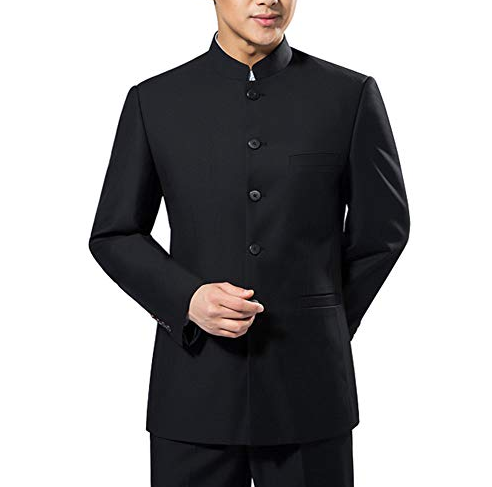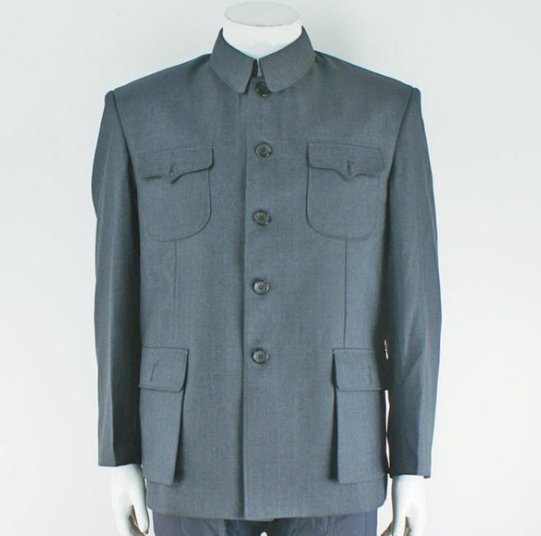History and Evolution
Origins of the Chinese Suit
The Chinese suit, also known as the Zhongshan suit, has roots deeply planted in the Republic of China era. Inspired by Sun Yat-sen’s desire to modernize traditional attire, the suit combined Western-style military uniforms with Chinese elements. Early versions featured a Mandarin collar and a straight cut, aiming to symbolize national unity and progress.
Modern Adaptations and Global Influence
Contemporary designers have reimagined the Chinese suit, integrating materials like lightweight wool and incorporating elements such as slimmer fits and varied colors. This modern twist has amplified its global appeal, with the suit appearing in international fashion capitals. Designers often experiment with the number of buttons and lapel styles, tailoring the suit to fit modern aesthetics while maintaining its traditional essence.

Traditional Designs
Traditional Chinese clothing reflects the country’s rich cultural heritage and aesthetic values. Each design embodies a specific ethos and regional identity, characterized by unique patterns, fabrics, and cuts.
The Mao Suit: China’s Iconic Attire
The Mao Suit, or Zhongshan suit, remains an emblem of 20th-century China. It boasts a turndown collar, four pockets, and five central buttons, each feature laden with symbolism and practicality. Chairman Mao popularized this suit, which led to its widespread adoption during revolutionary times. The suit reflects the principles of equality and unity, with its standardized look and absence of rank or class distinction.
Variations Across Different Chinese Regions
Regional variations of the Chinese suit tell stories of local customs and geography. In the north, thicker materials like wool prevail against the cold, while the south favors lighter silks and linens. The Changshan, a longer version of the suit, is popular in some areas, often featuring side slits for ease of movement. These regional styles not only serve practical needs but also showcase diverse aesthetic preferences across China. For example, elaborate embroidery from the Suzhou region represents the area’s historical focus on intricate craftsmanship.
Each variation adheres to a balance between form and function, with materials and designs chosen not only for their quality and durability but also for their cultural resonance. While the specifics, such as silk quality or embroidery patterns, might differ, the core design principles remain consistent, aiming to reflect the collective spirit and regional pride of the people.
The Making of a Chinese Suit
Crafting a Chinese suit is a meticulous process that blends tradition with precision. Each step, from material selection to the final fitting, is crucial in creating a garment that resonates with cultural authenticity and elegance.
Selecting Fabrics and Materials
Tailors begin by choosing the right fabric, typically silk, wool, or a blend, depending on the suit’s purpose and the wearer’s preference. Silk offers a luxurious sheen and is highly regarded for its quality and comfort, especially in warmer climates. Wool is preferable for its durability and warmth, making it ideal for cooler conditions. Costs vary widely with silk, especially fine-quality silk, often commanding a premium price. Fabric quality significantly impacts the suit’s final appearance, longevity, and comfort, making the selection phase critical.
Tailoring Techniques and Custom Fittings
Master tailors employ traditional techniques passed down through generations. They measure every aspect of the wearer’s body to ensure a precise fit, considering shoulder width, sleeve length, and waist size. Custom fittings follow a rigorous process, often requiring multiple sessions to perfect the suit’s silhouette. This personalized approach ensures that each suit accommodates the wearer’s movements with grace and comfort. The time invested in crafting a Chinese suit can range from several days to weeks, reflecting the tailor’s commitment to quality over speed.
Cultural Significance
Symbolism in Chinese Clothing
Chinese suits often carry profound symbolism. The four pockets traditionally represent the Four Cardinal Principles, stated by Confucius, which are propriety, justice, honesty, and a sense of shame. Colors also hold significance; for instance, red signifies good fortune and joy, while black typically represents solemnity and sophistication.
The Role of Suits in Modern Chinese Society
In modern China, the suit remains a symbol of formality and is often worn for important events and official functions. Its design, devoid of excess decoration, mirrors the values of modesty and pragmatism in Chinese culture. While not as prevalent in daily wear due to its formal connotations, the Chinese suit maintains a respected status in society, particularly among older generations.
Chinese Suits in Fashion
Contemporary Designers and Brands
Brands like Shanghai Tang have pioneered the transformation of the Chinese suit into a global fashion staple. They have merged traditional motifs with contemporary fabrics, appealing to a clientele seeking both authenticity and modernity.
Chinese Suits on the Global Stage
The Chinese suit has also made its way onto international runways, showcased by fashion houses looking to explore a blend of Eastern and Western styles. Its influence extends to cinematic wardrobes, where it often represents the convergence of traditional values with modern narratives.
Etiquette and Occasions
The Chinese suit is not just a piece of clothing but a garment steeped in cultural norms and etiquette, especially when worn during significant occasions.

Proper Wear and Etiquette for Chinese Suits
When donning a Chinese suit, wearers must consider the event and location. For formal occasions, darker colors are customary, with black being the standard for solemnity and respect. The suit should fit well, not too tight nor too loose, ensuring a dignified appearance. It is common to pair the suit with plain, dark shoes. Accessories like watches or rings should be understated if worn at all. Time is a valuable asset in Chinese culture, so punctuality when wearing a Chinese suit to an event is also a sign of respect.
Ceremonial and Formal Events
Chinese suits are the attire of choice for a range of events, from government functions to family gatherings like weddings and anniversaries. The age of the wearer can dictate certain style choices; for instance, older men might opt for a more traditional cut, while younger individuals may lean towards modern interpretations. At a wedding, the groom might wear a red suit to signify joy and prosperity. For funerals, a white armband on a dark suit marks mourning. The value placed on these garments is high, as they are often kept for a lifetime and worn only at events of great significance.